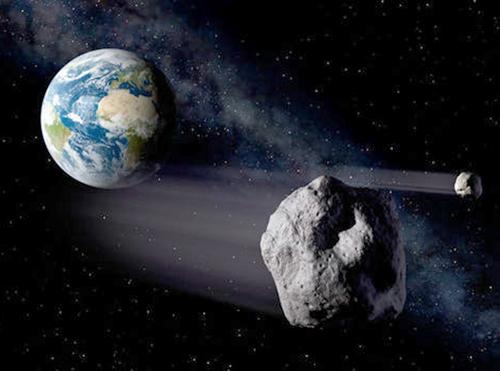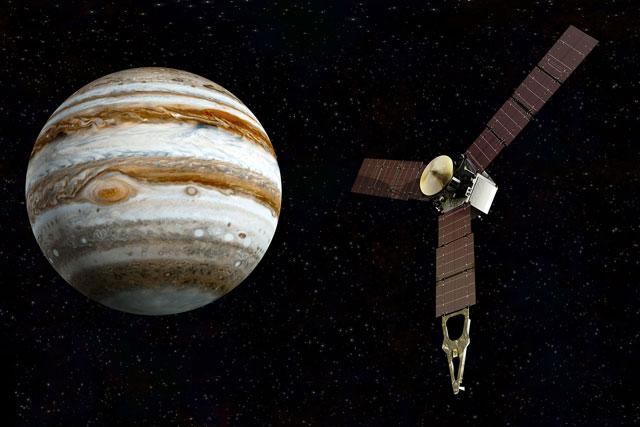You are here
Moon’s water came mostly from asteroids, not comets
By Los Angeles Times (TNS) - Aug 27,2016 - Last updated at Aug 27,2016

Photo courtesy of wallpaperseries.com
Icy comets may have a reputation for being the inner solar system’s ancient water delivery system, but a new study finds that most of the water in our nearest neighbour, the moon, was actually delivered by asteroids around 4.5 billion to 4.3 billion years ago.
The findings, published in the journal Nature Communications, offer a window on the processes that shaped the moon and gave the Earth much of the water for its oceans — and may shed light on the dynamics of the giant planets in the solar system’s early days.
The moon had long been thought to be exceedingly dry, based on rocks brought back by NASA’s Apollo lunar missions starting in the late 1960s. But more advanced techniques in recent years have actually picked out significant signs of water in those samples, said study co-author David Kring, a planetary scientist at the Lunar and Planetary Institute in Houston. In fact, he added, though the surface is parched, the lunar interior might actually have about 10,000 to 10 million times more water than the surface seems to hold.
But how exactly could all that water get to the moon and the Earth? Scientists have gone back and forth on whether the water came mainly from comets, which are full of ice but reside far beyond the orbit of Pluto, or asteroids, which are much closer (lying, today, between the orbits of Mars and Jupiter) but thought to be rockier and drier.
That, however, is something of a misconception, Kring said.
“Asteroids are also water rich or can be water rich,” Kring said. Often, that water is locked into the molecular structure of a clay, which causes some people to overlook it, he explained. “The larger scientific community oftentimes views them as rocks and they equate rocks as being inherently dry — and that simply is not true.”
To try and answer this question, an international team of researchers pulled data from a range of different studies that had analysed lunar samples brought back from the moon or meteorites (which are thought to be chunks of asteroids that fell to Earth). They studied the composition of volatile elements in the space rocks, looking in particular at the ratio of hydrogen to deuterium (a heavier isotope of hydrogen). This hydrogen-to-deuterium ratio acts as a sort of fingerprint that allows researchers to figure out where the moon’s water came from. In broad strokes: If it looks a lot like the ratio of a comet, it probably came from a comet. If the ratio looks like that of a certain type of asteroid, then it came from an asteroid.
After carefully collecting and modelling the data, the researchers found that the moon’s water probably came mostly from asteroids — even though comets have the reputation for being rich in water ice. From about 4.5 to 4.3 billion years ago, during a period the scientists are calling the “late accretion window”, more than 80 per cent of the moon’s water likely came from various types of asteroids and less than 20 per cent of it came from comets. Back then, the young, hot moon was covered in a magma ocean and the space missiles would have sunk their cargo into the fluid mix.
The findings could help explain where much of our planet’s water came from. After all, the freshly formed moon was far closer to Earth in the early days after its violent birth around 4.5 billion years ago. It is believed to have formed when a Mars-sized body slammed into Earth, ripping off debris that would coalesce to form our lunar satellite. During the time period Kring and his colleagues studied, the moon would have looked about 16 times bigger in the sky than it does today.
“Basically, whatever was happening on the moon was happening on the Earth,” Kring said.
The findings could also help scientists adjust their understanding of the forces at play in the larger solar system, Kring added. After all, if the majority of the moon’s water during this time period came from asteroids, it meant that the comets were not getting dragged out of their distant, elliptical orbits and yanked into the inner solar system.
The theory that comets predominantly brought water to Earth (and other bodies) requires some pretty notable movements or accretion rates on the part of gas giants like Jupiter, which are the only planetary bodies massive enough to exert the necessary gravitational pull. If most of the water instead came from asteroids, it might offer scientists new clues into the behaviour of Jupiter and its cohorts during this time period, the scientist said.
“That is going to be an important constraint on models of how the solar system evolved — that is, how and when giant planets formed, when their orbits changed and so on,” Kring said. “So the implications, I think, are far beyond the application to the Earth and the moon.”
Related Articles
Some of the water molecules in your drinking glass were created more than 4.5 billion years ago, according to new research.
PASADENA, California — Braving intense radiation, a NASA spacecraft reached Jupiter on Monday after a five-year voyage to begin explor
A couple years ago, astronomers made a surprising discovery: A significant number of asteroids were missing from the central region of the s













